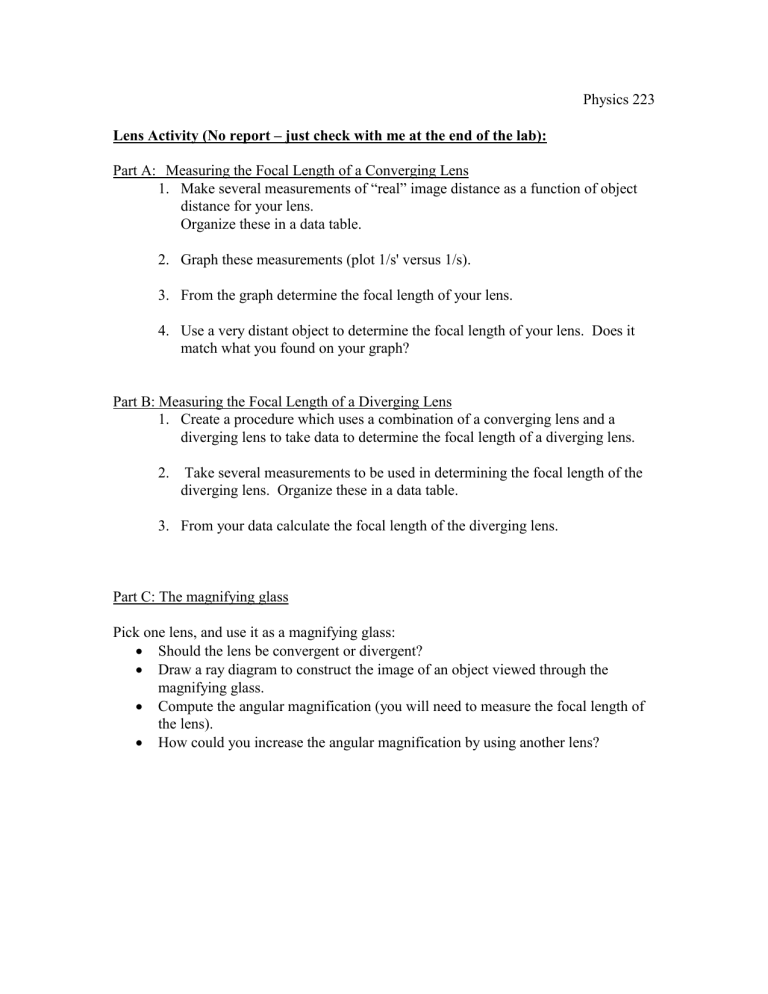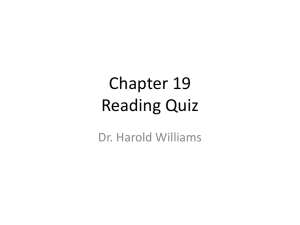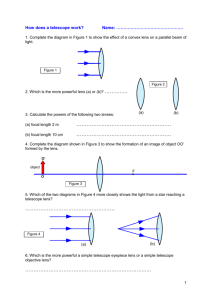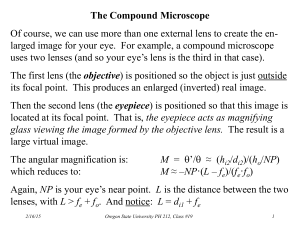Physics 202 - Seattle Central College

Physics 223
Lens Activity (No report – just check with me at the end of the lab):
Part A: Measuring the Focal Length of a Converging Lens
1. Make several measurements of “real” image distance as a function of object distance for your lens.
Organize these in a data table.
2. Graph these measurements (plot 1/s' versus 1/s).
3. From the graph determine the focal length of your lens.
4. Use a very distant object to determine the focal length of your lens. Does it match what you found on your graph?
Part B: Measuring the Focal Length of a Diverging Lens
1. Create a procedure which uses a combination of a converging lens and a diverging lens to take data to determine the focal length of a diverging lens.
2. Take several measurements to be used in determining the focal length of the diverging lens. Organize these in a data table.
3.
From your data calculate the focal length of the diverging lens.
Part C: The magnifying glass
Pick one lens, and use it as a magnifying glass:
Should the lens be convergent or divergent?
Draw a ray diagram to construct the image of an object viewed through the magnifying glass.
Compute the angular magnification (you will need to measure the focal length of the lens).
How could you increase the angular magnification by using another lens?
The refracting telescope (1 point of extra credit)
The telescope is used to obtain magnified images of distant objects. The figure below describes the principle of a telescope. Lens L1 (the objective) creates a real inverted image of a distant object. The image given by L1 is in the image focal plane of L1. The image is much smaller in size than the object (recall that m = - q/p). However, this reduced image is useful. By viewing this image through a second converging lens L2 (the eyepiece) – used as a magnifier – an enlarged image can be seen.
From far away object (e.g. star)
Objective: L1 Eyepiece: L2
1) Complete the drawing above to show how the image is viewed through the eyepiece.
2) Calculate the angular magnification m of the telescope in terms of the focal lengths f
0
of the objective and f e
of the eyepiece.
3) Set up a telescope using the 75 mm and 150 mm focal length lenses; the distance between the two lenses should be approximately 225 mm. Using the 75 mm lens as the eyepiece, look at some reasonably distant object (e.g. a meter stick). Move the 75mm lens as needed to bring the object into focus.
To measure the magnification, look with one eye through the telescope, and with the other eye look directly at the object. Compare the size of the two images, and calculate m .
Does it agree with the formula that you found in 2)?
4) Redo the measurement after switching the two lenses (i.e. use the 150 mm lens as the eyepiece).
Does it agree with the formula that you found in 2)?








